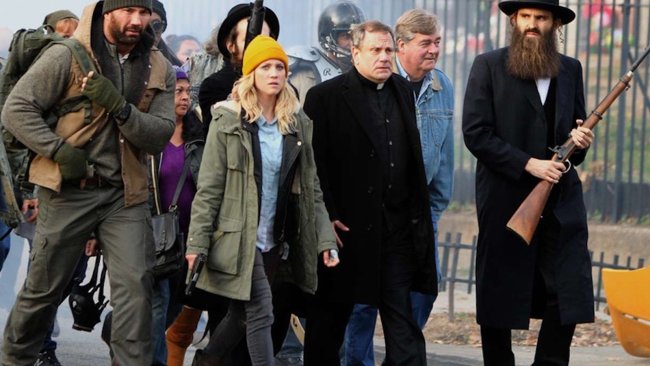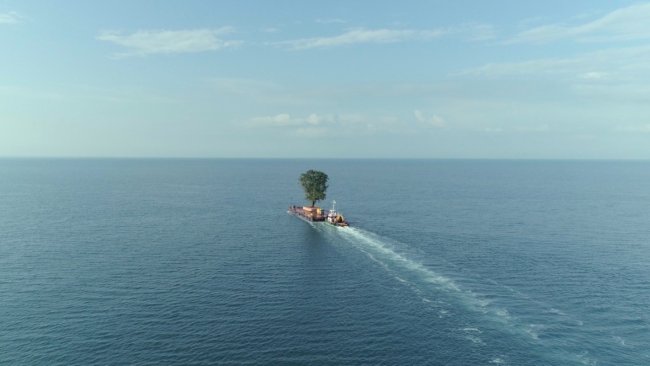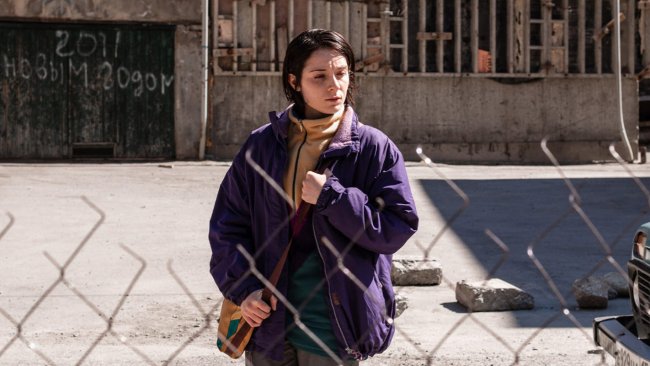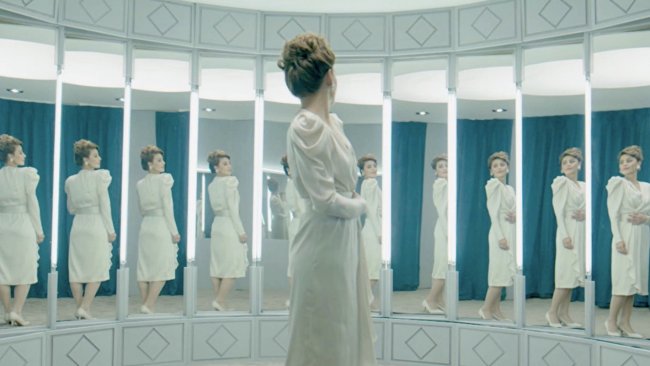Falaknaz
[…] A dialectic between the darkness and the bright daylight starts to install itself and define the structure of the film, as it establishes the filmic expression of the sharp divide in Iranian society, especially between men and women, but also between public and private spaces.
[…] But the theme of the woman/man divide in the Iranian society is more of a starting point than the main output in «Falaknaz»: the focus is rather on the complexity of a personality who positions herself in a hybrid territory.
[…] We could say that her embodiment of the modern Figaro and the pre-modern Rigoletto at the same time is a sign of her complexity.
[…] Instead of the notion of “reality” as an authoritative objective term of reference, to which one should be faithful, «Falaknaz» nicely presents a notion of “reality” as a complex fact that we try to explore and that tends to overcome our ability to depict it, or to even understand it.
Text: Giuseppe Di Salvatore
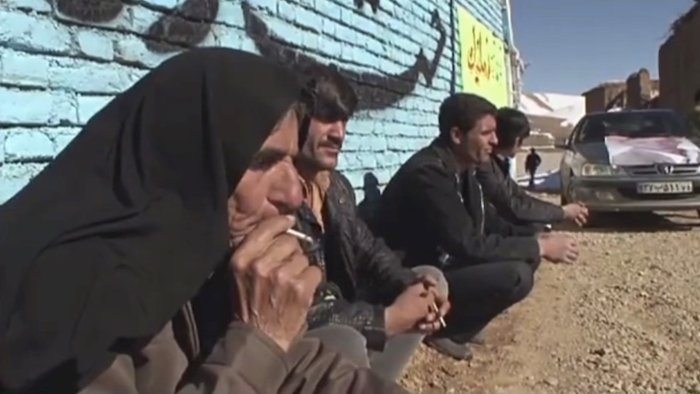
Much more than a storytelling documentary
The initial impact in this film is not necessarily easy to take: a very rough camera movement gives us an unpleasant feeling, but at least it succeeds in giving the camera an extraordinary presence. The subjectivity and the physicality of Sahar Salahshoor’s gaze constitutes a fundamental ingredient of this portrait of Falaknaz, a special woman in Fat’h Abad, an isolated village in the Zagros Mountain, Western Iran. We quickly understand that behind this seemingly improvised style of filming hides a very precise filmic construction, which is sustained by the amazing editing work. Salahshoor not only works with direct storytelling, but also uses different registers, especially the register that displays what I would call “expressionistic metaphors” – metaphors that are conveyed not through symbols but through the highlighting of particular filmic experiences or through specific formal choices. And the very first scene is nothing but a particular filmic experience where we do not see anything, the cameraperson being in the dark and trying to bravely follow Falaknaz through the fields at night while several dogs are barking at them. A young woman is following the example of a stronger older woman who does not fear the night or the unknown, and she fiercely faces the threats of invisible animals. The whole film is contained in this situation, as is the relationship between the filmmaker and the character, which emphasises a multifaceted and relatively unprecedented reflection on women in Iran.
The dialectic between the dark and the bright
The example of this first scene also shows us how the camera and the entire process of filmmaking are following the reality; how they are influenced by the character, and do not simply depict her. This leads us to emphasise a precise formal choice made by Salahshoor, which I read as a way of expressing the reality that the filmmaker was experiencing in the desert landscape of Western Iran: after the impressive night scene, the viewer is literally “hit” by the bright light reverberating through this landscape. A dialectic between the darkness and the bright daylight starts to install itself and define the structure of the film, as it establishes the filmic expression of the sharp divide in Iranian society, especially between men and women, but also between public and private spaces. To this end, two elements present themselves as transversal and independent: the camera and Falaknaz herself. Both are explicitly questioned in their freedom of movement and in their power of enlightenment, as if they were two accomplices claiming autonomy. Thus, the dark/bright dialectic is a formal choice that has a precise function: creating an aesthetic framework within which Salahshoor can then highlight the “breaking” feature of her character – and of her filmmaking aesthetics.
Portrait and landscape: a social panorama
Through this reflection, we can better understand how to read the “classic” theme of the relationship between a landscape and a portrait. There is a clear resonance between the two forms, insofar as Falaknaz’ coarseness seems to extend or express the asperity of the country and her surroundings, and her stubborn hardworking figure is largely measured through her struggle with the unproductive earth. But, the scenes of her sowing seeds on what appears to be a desolate desert or when she is irrigating in the night are particularly strong because they also clearly express her position against the tide, especially with respect to the rigidity of the social habits. In fact, her portrait gains all the relevance in the context of the social panorama of her village and in Iran more generally. The film starts as a journey into the feminine world of the Iranian countryside but, thanks to the very masculine figure of Falaknaz, it expands very quickly to involve the life of the entire village. It is probably not a coincidence that the first time we see men at all is during a ceremony «for the dead »… But the theme of the woman/man divide in the Iranian society is more of a starting point than the main output in Falaknaz: the focus is rather on the complexity of a personality who positions herself in a hybrid territory.
A hybrid or complex figure
Exploring her personality, we find a possible reason for Salahshoor’s choice for the camera’s movements: a tripod would have been absolutely inappropriate for what develops itself as the pursuance of the almost impossible task of grasping Falaknaz. She is not a transgender hero, nor is she a character who would clearly embody a third alternative model beyond the well-defined traditional roles of men and women in Iran. She is a traditional mother, but at the same time, she assumes the classic prerogatives of a machist man; her political views fluctuate between tolerant liberal pleas and very conservative nationalist slogans. Her pragmatism makes her play many positions at the same time; within the social balances of the village life she seems to be respected for her shrewdness (and for her hardworking and virile attitudes) and, at the same time, she appears to be the laughing stock – and there will rarely be an audience of Falaknaz that would not laugh during the film, even if with the sincerest sympathy. We could say that her embodiment of the modern Figaro and the pre-modern Rigoletto at the same time is a sign of her complexity. Anyway, as for Figaro and Rigoletto, her freedom is paid for with an expensive bill: here, she is presented with the impossibility of having a “normal” life; of being considered a “normal” woman. This is the reason why Salahshoor’s hero and model is not only a positive one: in the end, the expressive power of the “green” field of Fat’h Abad in the springtime notwithstanding, we don’t see a triumphing hero, but a complex and bittersweet character. This reveals itself, finally, to be the secret and “realist” force of Falaknaz.
Which realism is at stake in Falaknaz?
Yes, realism; it was the main theme for the two-day conference «Where the Truth Lies» at the University of Basel, which concluded with the projection of Salahshoor’s film. There could be no better title for the question of realism in general, with the ambivalence of the verb “to lie”, as in to be located somewhere, and to the lies that are told… Many forms of realism amount to a concealed way of imposing a univocal vision of the world that we share, with a particular predilection for moralism or with a methodology that surreptitiously presupposes a questionable declaration of innocence or neutrality (and the current debate on “fake news” often risks irresponsibly reinforcing these dangerous forms of realism…). Instead of the notion of “reality” as an authoritative objective term of reference, to which one should be faithful, Falaknaz nicely presents a notion of “reality” as a complex fact that we try to explore and that tends to overcome our ability to depict it, or to even understand it. The reality that we discover with Falaknaz is surprisingly close to the improbable, to the extent to which reality can go beyond the visions and representations that we already have of it – or that we can easily have. In this sense, Salahshoor’s Falaknaz reminds us how the best documentary realism is one that is able to convey a story that might appear so improbable that it sounds fictional. Whether this ability is up to Falaknaz’ visionary attitude or to Salahshoor’s personal visions would be frankly an idle question, because a filmic reality always stems from the encounter between the person behind and the person in front of the camera. And Falaknaz is, first of all, the story of an encounter.
This article contains a third-party video. If you would like to watch the video, please adjust your settings.
Info
Falaknaz | Film | Sahar Salahshoor | IRN 2015 | 59’ | Neues Kino Basel
Conference «Where the Truth Lies» | Seminar for Media Studies, University of Basel | Matthias Wittmann, Hemen Heidari, Ute Holl | Forum eikones Basel, Neues Kino Basel | 1-2/12/2017
On the Conference «Where the Truth Lies»
First published: December 05, 2017
